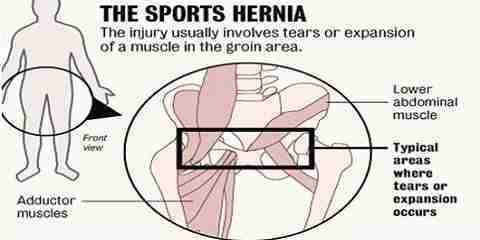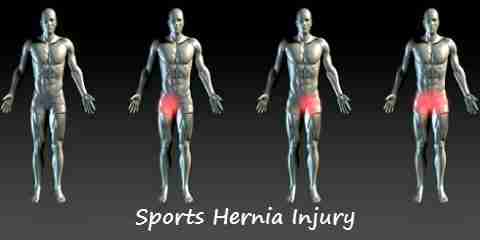
Deciding if you have an all-out Sports Hernia (athletic pubalgia) can be very difficult. The injury is exceptionally intricate and moderately new in the therapeutic group, making a diagnosis hard to get unless you visit a specialist doctor.
Imagine if you don’t know the symptoms, you won’t know how to treat the groin injury. This article will help you to describe 3 sports hernia symptoms and how to diagnose it so you can treat them in early stage.
Kind of Sport Hernia Symptoms

Pain in the groin area.
The first symptom of sport hernia is pain in the groin area. On the off chance that you are one of only a handful few with testicular torment and haven’t just had medical procedure, making a point to get the insignificant repair system is fundamental.
On the off chance that you have effectively gone under the blade, get the first work evacuated at the earliest opportunity. It is essential to ensure it isn’t just a pulled groin. We have shrouded this in awesome detail in our groin pain control. The quick and painless answer, be that as it may, is that you won’t have the capacity to really know whether you have gilmore’s groin until 6-10 weeks pass.

Tenderness or bruising in the upper thigh and/or lower abdomen.
Swelling and bruising can happen rapidly. At times swelling and bruising don’t appear for a couple of days after the damage. It depends on the location of sport hernia that you had and how much severe the injury is.
If there is a hit in the groin area when you fall, it probably causes you a bruise. This condition is one of athletic pubalgia symptoms that you should aware.
Pain that becomes very intense when you move from side to side or flex your abdominal muscles.
The third sign of a sports hernia is pain when repetitive turning and shear powers experienced amid abnormal state sport can prompt damage of the lower stomach divider.
Ordinarily, solid thigh abductors can intensify the issue, and at whatever point there’s pain, the body frequently adjusts, which can cause strains and pulls in different direction. Pain in the groin and pelvis can be caused by various diverse issues, including damage to the lumbar spine, hip joint, sacroiliac joint, stomach muscles or the genitourinary system.
How to Diagnose Sport Hernia

The first one is understanding patient history. Deciding the correct component of damage, regardless of whether it was an occasion or the consequence of numerous weeks, months, or years of abuse amid sports, is vital for touching base at a sport hernia analysis. Along these lines, the specialist will probably meet the athlete and ask about late athletic activity.
The second one is physical exam. The specialist will lead a careful exam of the lower belly, pubic region, and the legs to check the symptoms. To start with, the specialist will palpate (touch) these regions and examine them outwardly with the patient sitting or potentially resting, hunting down delicacy and different indications of tissue injury.
The third one is diagnostic imaging. At least one indicative imaging sweeps might be performed to enable the specialist to affirm the clinical determination, and additionally to decide the correct location(s) of tissue injury. Magnetic resonance imaging (MRI) is the most widely recognized test used to distinguish sports hernia.